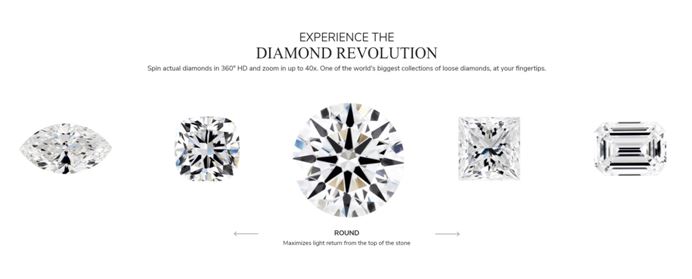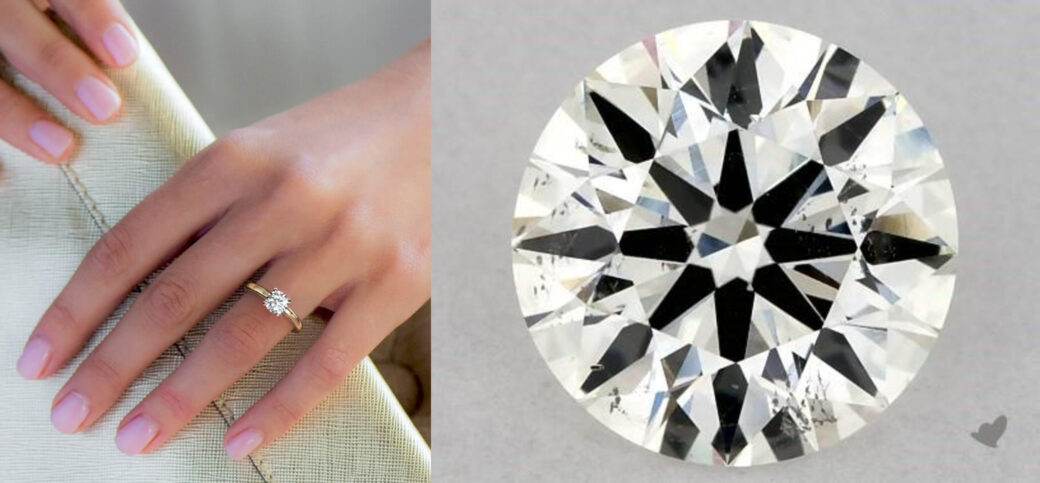The value of a 1-carat diamond can vary widely based on several factors, including its cut, color, clarity, and overall quality, as well as market demand and where it’s purchased from. As of my last training data in January 2022:
- A 1-carat diamond of average quality might cost between $2,500 to $4,500.
- A high-quality 1-carat diamond with exceptional cut, color, and clarity could range from $6,000 to over $12,000.
- Diamonds with lesser quality in terms of cut, color, and clarity can be available for less than $2,500.
However, prices can fluctuate based on economic conditions, mining outputs, and other factors. Moreover, these prices can vary significantly depending on the retailer, region, and other market dynamics.
The allure of a diamond, with its radiant sparkle and timeless elegance, has enchanted humankind for centuries. Among the myriad of factors that determine the worth of a diamond, its carat weight holds significant importance. But how much is a 1 carat diamond really worth? The answer, as we’ll discover, is not as straightforward as a simple number. Let’s delve deep into the world of diamonds, gathering insights from experts in the field.

The Basics: What Does “Carat” Mean?
Firstly, it’s essential to understand what a ‘carat’ represents. A carat, often abbreviated as ‘ct’, is a unit of weight used to measure gemstones and pearls. One carat is equivalent to 200 milligrams.
Gemologist Dr. Elaine Roberts explains, “It’s crucial to differentiate between ‘carat’ and ‘karat.’ While ‘carat’ denotes the weight of a gemstone, ‘karat’ pertains to the purity of gold. It’s a common misconception that often needs clarification.”
Factors Influencing the Value of a 1 Carat Diamond
While carat weight is undeniably essential, other elements play a pivotal role in determining a diamond’s worth. The famous “Four Cs” – Carat, Cut, Color, and Clarity – collectively influence a diamond’s value.
- Cut: The cut of a diamond doesn’t just refer to its shape but how well it has been cut and faceted. A well-cut diamond will exhibit brilliance and sparkle.
Jewelry Designer, Alan Smith, says, “A 1 carat diamond with an excellent cut can fetch a higher price than a poorly cut diamond, even if they share the same weight. The cut determines how light reflects within the stone.” - Color: Diamonds come in a spectrum of colors, with D being colorless and Z having noticeable color. Colorless diamonds tend to be more valuable.
- Clarity: This refers to the internal and external imperfections, known as inclusions and blemishes. Diamonds with fewer imperfections command a higher price.
- Carat: Larger diamonds are rarer and, therefore, more valuable. However, a 1 carat diamond’s worth can vastly differ based on the other Cs.
Current Market Conditions
The value of diamonds, like any other commodity, is influenced by market demand and supply. External factors, such as economic conditions, geopolitical situations, and even marketing campaigns, can affect diamond prices.
Economist Dr. Lara Mitchell points out, “The worth of diamonds isn’t static. It fluctuates based on mining outputs, global demand, and other macroeconomic factors.”
Expert Opinion on the Worth of a 1 Carat Diamond
Diamond Merchant, Daniel Foster, shares, “In today’s market, a 1 carat diamond can range anywhere from $2,500 to $16,000. This vast range is due to variations in cut, color, clarity, and even where you’re purchasing from. Always remember, when buying a diamond, you’re not just paying for the stone but also craftsmanship, brand value, and other nuances.”
Gemologist Dr. Elaine Roberts adds, “Beyond the 4 Cs, a diamond’s origin, whether it’s ethically sourced, its fluorescence, and even its history, can influence its worth. For instance, diamonds with a provenance of royal or celebrity ownership can command astronomical prices.”
Pros and Cons of a 1 Carat Diamond
Certainly! When considering the purchase of a 1-carat diamond, it’s essential to weigh the pros and cons. This will give you a better understanding and help guide your decision-making process.
Pros of a 1-Carat Diamond:
- Popular Size: A 1-carat diamond is a highly sought-after weight for engagement rings and jewelry. It’s large enough to showcase the diamond’s beauty but not so large as to appear ostentatious.
- Balanced Appeal: It strikes a balance between size, cost, and sparkle, making it an attractive option for many buyers.
- Broad Market Availability: Due to its popularity, there’s a broad market for 1-carat diamonds, offering potential buyers a wide selection of stones in terms of cut, color, and clarity.
- Retains Value: Diamonds, especially those of popular sizes like 1-carat, often retain their value over time, especially if they are of high quality.
- Versatility: A 1-carat diamond suits various jewelry types, from engagement rings to pendants to earrings.
Cons of a 1-Carat Diamond:
- Price Jump: There is a noticeable price jump when moving from diamonds just under 1 carat to those that are exactly 1 carat or just over. This is due to the premium placed on this milestone weight.
- Quality Variance: Because 1-carat diamonds are popular, there’s a broad quality range. Some might be of lower quality in terms of cut, clarity, or color, yet still command higher prices purely because of their weight.
- Potential Overpay: If not well-researched, buyers might overpay for a 1-carat diamond, thinking they’re getting a good deal based solely on carat weight.
- Visibility of Imperfections: Depending on its cut and shape, imperfections or inclusions might be more visible in a 1-carat diamond compared to smaller diamonds.
- Expectation vs. Reality: Some buyers may expect a 1-carat diamond to appear significantly larger than half-carat or three-quarter carat diamonds, but the difference in size might not be as noticeable as expected.
In Conclusion
Deciphering the worth of a 1 carat diamond isn’t a matter of simple arithmetic. Numerous factors, both intrinsic and extrinsic, come into play. For potential buyers and diamond enthusiasts, understanding these nuances is essential. It’s always recommended to consult with trusted experts, get certifications, and educate oneself before venturing into the dazzling world of diamonds. After all, diamonds aren’t just chunks of carbon; they’re symbols of eternity, love, and the indomitable spirit of Earth’s creations.
